AMD Radeon R7 360 vs Nvidia GeForce GTX 750 Ti: What is the difference?
39points
AMD Radeon R7 360
41points
Nvidia GeForce GTX 750 Ti
EVGAEVGA Superclocked
vs
54 facts in comparison
AMD Radeon R7 360
Nvidia GeForce GTX 750 Ti
Why is AMD Radeon R7 360 better than Nvidia GeForce GTX 750 Ti?
- 0.23 TFLOPS higher floating-point performance?
1.54 TFLOPSvs1.31 TFLOPS - 275MHz faster memory clock speed?
1625MHzvs1350MHz - 1100MHz higher effective memory clock speed?
6500MHzvs5400MHz - 7.2 GTexels/s higher texture rate?
48 GTexels/svs40.8 GTexels/s - 0.8 newer version of DirectX?
12vs11.2 - 17.6GB/s more memory bandwidth?
104GB/svs86.4GB/s - 128 more shading units?
768vs640 - 210million more transistors?
2080 millionvs1870 million
Why is Nvidia GeForce GTX 750 Ti better than AMD Radeon R7 360?
- 40W lower TDP?
60Wvs100W - 1 more DVI outputs?
2vs1
Which are the most popular comparisons?
AMD Radeon R7 360
vs
AMD Radeon RX 550
Nvidia GeForce GTX 750 Ti
vs
AMD Radeon RX 550
AMD Radeon R7 360
vs
Nvidia GeForce GTX 1050
Nvidia GeForce GTX 750 Ti
vs
Nvidia GeForce GTX 1050
AMD Radeon R7 360
vs
AMD Radeon R7 260X
Nvidia GeForce GTX 750 Ti
vs
MSI Radeon RX 580
AMD Radeon R7 360
vs
AMD Radeon Vega 8
Nvidia GeForce GTX 750 Ti
vs
Nvidia GeForce GT 1030 DDR4
AMD Radeon R7 360
vs
AMD Radeon R7 250
Nvidia GeForce GTX 750 Ti
vs
AMD Radeon Vega 8
AMD Radeon R7 360
vs
Nvidia GeForce GT 1030 DDR4
Nvidia GeForce GTX 750 Ti
vs
Nvidia GeForce GTX 1650
AMD Radeon R7 360
vs
AMD Radeon RX 470
Nvidia GeForce GTX 750 Ti
vs
AMD Radeon RX 6400
AMD Radeon R7 360
vs
AMD Radeon R9 270X
Nvidia GeForce GTX 750 Ti
vs
Nvidia GeForce GTX 960
AMD Radeon R7 360
vs
AMD Radeon R9 280
Nvidia GeForce GTX 750 Ti
vs
Nvidia GeForce GTX 750
Nvidia GeForce GTX 750 Ti
vs
Zotac GeForce GTX 1050 Ti OC Edition
Price comparison
User reviews
Overall Rating
AMD Radeon R7 360
1 User reviews
AMD Radeon R7 360
10. 0/10
1 User reviews
Nvidia GeForce GTX 750 Ti
2 User reviews
Nvidia GeForce GTX 750 Ti
10.0/10
2 User reviews
Features
Value for money
10.0/10
1 votes
10.0/10
2 votes
Gaming
8.0/10
1 votes
8.5/10
2 votes
Performance
8.0/10
1 votes
7.5/10
2 votes
Fan noise
10.0/10
1 votes
5.5/10
2 votes
Reliability
10.0/10
1 votes
10.0/10
2 votes
Performance
1.GPU clock speed
1000MHz
1020MHz
The graphics processing unit (GPU) has a higher clock speed.
2.GPU turbo
1050MHz
1085MHz
When the GPU is running below its limitations, it can boost to a higher clock speed in order to give increased performance.
3.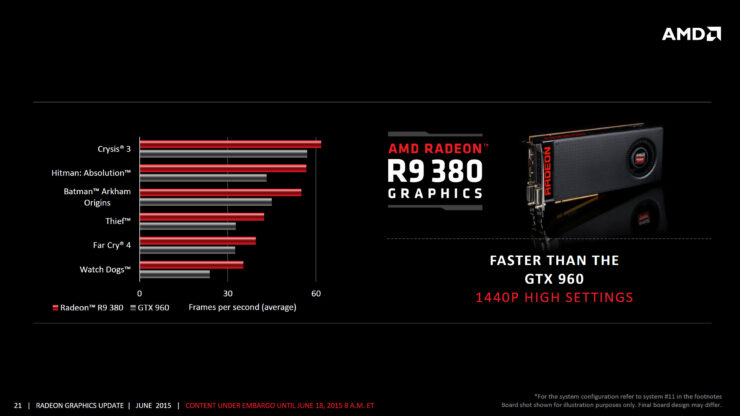 pixel rate
pixel rate
16 GPixel/s
16.3 GPixel/s
The number of pixels that can be rendered to the screen every second.
4.floating-point performance
1.54 TFLOPS
1.31 TFLOPS
Floating-point performance is a measurement of the raw processing power of the GPU.
5.texture rate
48 GTexels/s
40.8 GTexels/s
The number of textured pixels that can be rendered to the screen every second.
6.GPU memory speed
1625MHz
1350MHz
The memory clock speed is one aspect that determines the memory bandwidth.
7.shading units
Shading units (or stream processors) are small processors within the graphics card that are responsible for processing different aspects of the image.
8.texture mapping units (TMUs)
TMUs take textures and map them to the geometry of a 3D scene. More TMUs will typically mean that texture information is processed faster.
More TMUs will typically mean that texture information is processed faster.
9.render output units (ROPs)
The ROPs are responsible for some of the final steps of the rendering process, writing the final pixel data to memory and carrying out other tasks such as anti-aliasing to improve the look of graphics.
Memory
1.effective memory speed
6500MHz
5400MHz
The effective memory clock speed is calculated from the size and data rate of the memory. Higher clock speeds can give increased performance in games and other apps.
2.maximum memory bandwidth
104GB/s
86.4GB/s
This is the maximum rate that data can be read from or stored into memory.
3.VRAM
VRAM (video RAM) is the dedicated memory of a graphics card. More VRAM generally allows you to run games at higher settings, especially for things like texture resolution.
4.memory bus width
128bit
128bit
A wider bus width means that it can carry more data per cycle. It is an important factor of memory performance, and therefore the general performance of the graphics card.
5.version of GDDR memory
Newer versions of GDDR memory offer improvements such as higher transfer rates that give increased performance.
6.Supports ECC memory
✖AMD Radeon R7 360
✖Nvidia GeForce GTX 750 Ti
Error-correcting code memory can detect and correct data corruption. It is used when is it essential to avoid corruption, such as scientific computing or when running a server.
Features
1.DirectX version
DirectX is used in games, with newer versions supporting better graphics.
2.OpenGL version
OpenGL is used in games, with newer versions supporting better graphics.
3.OpenCL version
Some apps use OpenCL to apply the power of the graphics processing unit (GPU) for non-graphical computing. Newer versions introduce more functionality and better performance.
4.Supports multi-display technology
✔AMD Radeon R7 360
✔Nvidia GeForce GTX 750 Ti
The graphics card supports multi-display technology. This allows you to configure multiple monitors in order to create a more immersive gaming experience, such as having a wider field of view.
5.load GPU temperature
Unknown. Help us by suggesting a value. (AMD Radeon R7 360)
A lower load temperature means that the card produces less heat and its cooling system performs better.
6.supports ray tracing
✖AMD Radeon R7 360
✖Nvidia GeForce GTX 750 Ti
Ray tracing is an advanced light rendering technique that provides more realistic lighting, shadows, and reflections in games.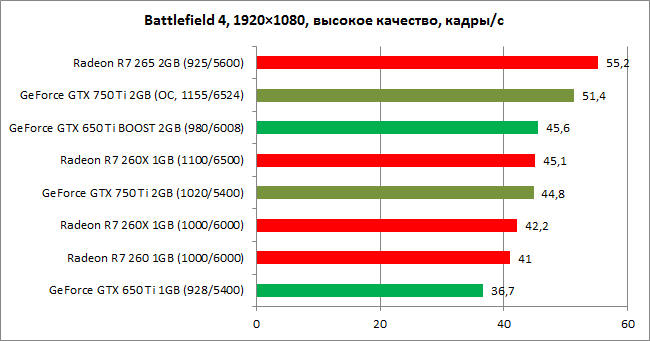
7.Supports 3D
✔AMD Radeon R7 360
✔Nvidia GeForce GTX 750 Ti
Allows you to view in 3D (if you have a 3D display and glasses).
8.supports DLSS
✖AMD Radeon R7 360
✖Nvidia GeForce GTX 750 Ti
DLSS (Deep Learning Super Sampling) is an upscaling technology powered by AI. It allows the graphics card to render games at a lower resolution and upscale them to a higher resolution with near-native visual quality and increased performance. DLSS is only available on select games.
9.PassMark (G3D) result
Unknown. Help us by suggesting a value. (AMD Radeon R7 360)
This benchmark measures the graphics performance of a video card. Source: PassMark.
Ports
1.has an HDMI output
✔AMD Radeon R7 360
✔Nvidia GeForce GTX 750 Ti
Devices with a HDMI or mini HDMI port can transfer high definition video and audio to a display.
2.HDMI ports
More HDMI ports mean that you can simultaneously connect numerous devices, such as video game consoles and set-top boxes.
3.HDMI version
Unknown. Help us by suggesting a value. (AMD Radeon R7 360)
Unknown. Help us by suggesting a value. (Nvidia GeForce GTX 750 Ti)
Newer versions of HDMI support higher bandwidth, which allows for higher resolutions and frame rates.
4.DisplayPort outputs
Allows you to connect to a display using DisplayPort.
5.DVI outputs
Allows you to connect to a display using DVI.
6.mini DisplayPort outputs
Allows you to connect to a display using mini-DisplayPort.
Price comparison
Cancel
Which are the best graphics cards?
GeForce GTX 750 Ti vs Radeon R7 360 Graphics cards Comparison
In this comparison between GeForce GTX 750 Ti and Radeon R7 360 you will find out which graphics card performs better in today’s games.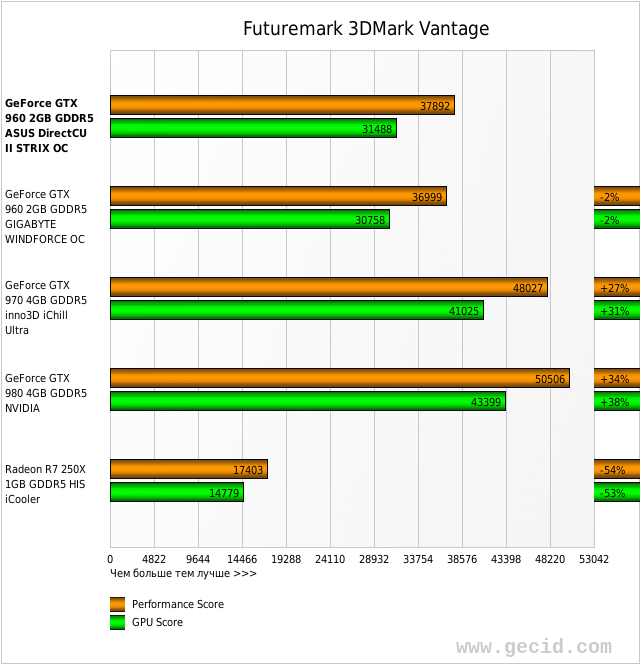 Bear in mind that third-party versions may have more efficient cooling and higher clock speeds. This will increase cards’ performance, though not by much. In addition to raw power you should also take into account the dimensions. Thicker models simply will not fit into a small mini-ITX case. The resolution of your monitor also affects the choice, since 4K gameplay requires a more powerful GPU. And don’t overspend on the graphics card. Other parts of your build may also need to be upgraded, save some money for the CPU or power supply. For some people GeForce GTX 750 Ti will be the best choice, for others Radeon R7 360 will be their preference. Study the comparison tables below and make your choice.
Bear in mind that third-party versions may have more efficient cooling and higher clock speeds. This will increase cards’ performance, though not by much. In addition to raw power you should also take into account the dimensions. Thicker models simply will not fit into a small mini-ITX case. The resolution of your monitor also affects the choice, since 4K gameplay requires a more powerful GPU. And don’t overspend on the graphics card. Other parts of your build may also need to be upgraded, save some money for the CPU or power supply. For some people GeForce GTX 750 Ti will be the best choice, for others Radeon R7 360 will be their preference. Study the comparison tables below and make your choice.
GeForce GTX 750 Ti
Check Price
Radeon R7 360
Check Price
Main Specs
| GeForce GTX 750 Ti | Radeon R7 360 | |
| Power consumption (TDP) | 60 Watt | 100 Watt |
| Interface | PCIe 3. 0 x16 0 x16 |
PCIe 3.0 x16 |
| Supplementary power connectors | None | 1 x 6-pin |
| Memory type | GDDR5 | GDDR5 |
| Maximum RAM amount | 2 GB | 2 GB |
| Display Connectors | 2x DVI, 1x mini-HDMI | 1x DVI, 1x HDMI, 1x DisplayPort |
|
Check Price |
Check Price |
- Radeon R7 360 has 66% more power consumption, than GeForce GTX 750 Ti.

- Both video cards are using PCIe 3.0 x16 interface connection to a motherboard.
- GeForce GTX 750 Ti and Radeon R7 360 have maximum RAM of 2 GB.
- Both cards are used in Desktops.
- GeForce GTX 750 Ti is build with Maxwell architecture, and Radeon R7 360 — with GCN 2.0.
- GeForce GTX 750 Ti and Radeon R7 360 are manufactured by 28 nm process technology.
- Radeon R7 360 is 160 mm longer, than GeForce GTX 750 Ti.
- Memory clock speed of Radeon R7 360 is 5995 MHz higher, than GeForce GTX 750 Ti.
Game benchmarks
| Assassin’s Creed OdysseyBattlefield 5Call of Duty: WarzoneCounter-Strike: Global OffensiveCyberpunk 2077Dota 2Far Cry 5FortniteForza Horizon 4Grand Theft Auto VMetro ExodusMinecraftPLAYERUNKNOWN’S BATTLEGROUNDSRed Dead Redemption 2The Witcher 3: Wild HuntWorld of Tanks | ||
| high / 1080p | 20−22 | 16−18 |
| ultra / 1080p | 12−14 | 9−10 |
| QHD / 1440p | 6−7 | 4−5 |
| 4K / 2160p | 5−6 | 4−5 |
| low / 720p | 40−45 | 30−35 |
| medium / 1080p | 24−27 | 20−22 |
The average gaming FPS of GeForce GTX 750 Ti in Assassin’s Creed Odyssey is 35% more, than Radeon R7 360.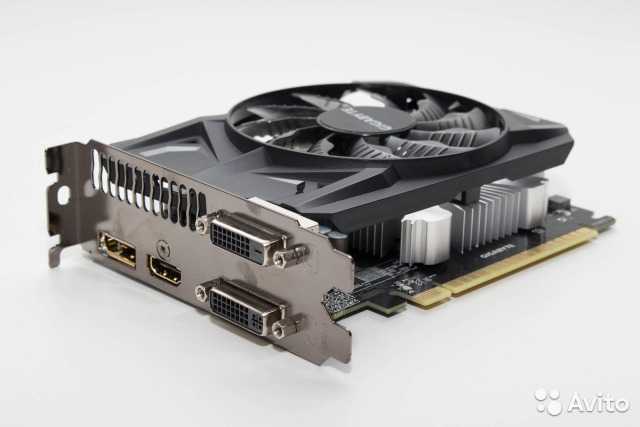 |
||
| high / 1080p | 30−35 | 24−27 |
| ultra / 1080p | 27−30 | 21−24 |
| QHD / 1440p | 10−12 | 8−9 |
| 4K / 2160p | 8−9 | 6−7 |
| low / 720p | 65−70 | 50−55 |
| medium / 1080p | 35−40 | 27−30 |
| The average gaming FPS of GeForce GTX 750 Ti in Battlefield 5 is 25% more, than Radeon R7 360. | ||
| low / 768p | 50−55 | 45−50 |
| QHD / 1440p | 0−1 | 0−1 |
The average gaming FPS of GeForce GTX 750 Ti in Call of Duty: Warzone is 10% more, than Radeon R7 360. |
||
| low / 768p | 230−240 | 210−220 |
| medium / 768p | 200−210 | 180−190 |
| ultra / 1080p | 120−130 | 100−110 |
| QHD / 1440p | 90−95 | 55−60 |
| 4K / 2160p | 50−55 | 30−35 |
| high / 768p | 160−170 | 140−150 |
| The average gaming FPS of GeForce GTX 750 Ti in Counter-Strike: Global Offensive is 17% more, than Radeon R7 360. | ||
| low / 768p | 60−65 | 55−60 |
| ultra / 1080p | 50−55 | 40−45 |
| medium / 1080p | 55−60 | 45−50 |
The average gaming FPS of GeForce GTX 750 Ti in Cyberpunk 2077 is 16% more, than Radeon R7 360.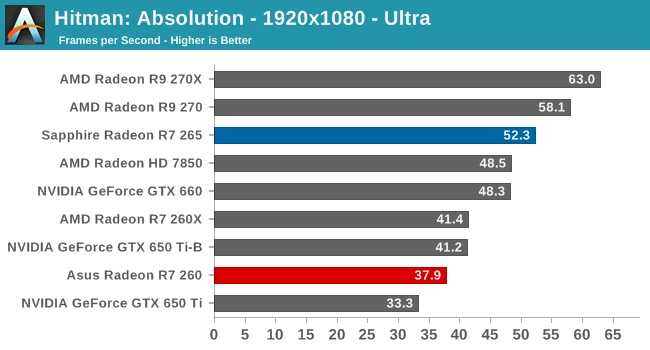 |
||
| low / 768p | 120−130 | 110−120 |
| medium / 768p | 100−110 | 95−100 |
| ultra / 1080p | 80−85 | 65−70 |
| The average gaming FPS of GeForce GTX 750 Ti in Dota 2 is 11% more, than Radeon R7 360. | ||
| high / 1080p | 24−27 | 18−20 |
| ultra / 1080p | 21−24 | 16−18 |
| QHD / 1440p | 18−20 | 16−18 |
| 4K / 2160p | 8−9 | 6−7 |
| low / 720p | 50−55 | 40−45 |
| medium / 1080p | 27−30 | 20−22 |
The average gaming FPS of GeForce GTX 750 Ti in Far Cry 5 is 30% more, than Radeon R7 360. |
||
| high / 1080p | 30−35 | 24−27 |
| ultra / 1080p | 24−27 | 20−22 |
| QHD / 1440p | 16−18 | 16−18 |
| low / 720p | 120−130 | 100−110 |
| medium / 1080p | 70−75 | 55−60 |
| The average gaming FPS of GeForce GTX 750 Ti in Fortnite is 20% more, than Radeon R7 360. | ||
| high / 1080p | 30−35 | 27−30 |
| ultra / 1080p | 24−27 | 21−24 |
| QHD / 1440p | 14−16 | 10−11 |
| 4K / 2160p | 12−14 | 10−11 |
| low / 720p | 65−70 | 55−60 |
| medium / 1080p | 35−40 | 30−33 |
The average gaming FPS of GeForce GTX 750 Ti in Forza Horizon 4 is 19% more, than Radeon R7 360. |
||
| low / 768p | 100−110 | 85−90 |
| medium / 768p | 90−95 | 75−80 |
| high / 1080p | 40−45 | 30−35 |
| ultra / 1080p | 16−18 | 12−14 |
| QHD / 1440p | 7−8 | 3−4 |
| The average gaming FPS of GeForce GTX 750 Ti in Grand Theft Auto V is 23% more, than Radeon R7 360. | ||
| high / 1080p | 12−14 | 10−11 |
| ultra / 1080p | 10−11 | 8−9 |
| QHD / 1440p | 10−11 | − |
| 4K / 2160p | 3−4 | 3−4 |
| low / 720p | 40−45 | 30−35 |
| medium / 1080p | 18−20 | 12−14 |
The average gaming FPS of GeForce GTX 750 Ti in Metro Exodus is 30% more, than Radeon R7 360.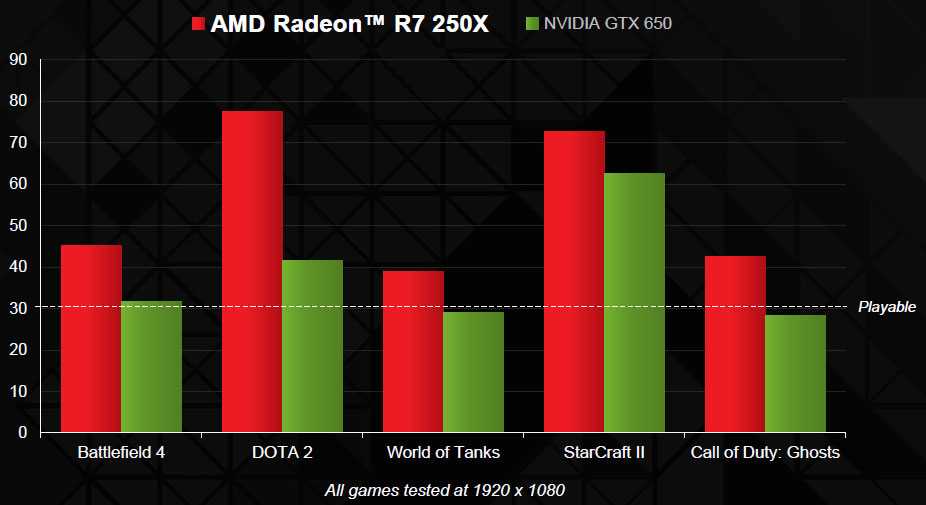 |
||
| low / 768p | 120−130 | 110−120 |
| medium / 1080p | 110−120 | 100−110 |
| The average gaming FPS of GeForce GTX 750 Ti in Minecraft is 9% more, than Radeon R7 360. | ||
| high / 1080p | − | 21−24 |
| ultra / 1080p | 14−16 | 18−20 |
| low / 720p | 70−75 | 55−60 |
| medium / 1080p | 18−20 | 24−27 |
| The average gaming FPS of GeForce GTX 750 Ti in PLAYERUNKNOWN’S BATTLEGROUNDS is 2% more, than Radeon R7 360. | ||
| high / 1080p | 14−16 | 14−16 |
| ultra / 1080p | 10−11 | 10−11 |
| QHD / 1440p | 1−2 | 0−1 |
| 4K / 2160p | 1−2 | − |
| low / 720p | 35−40 | 30−33 |
| medium / 1080p | 21−24 | 16−18 |
The average gaming FPS of GeForce GTX 750 Ti in Red Dead Redemption 2 is 16% more, than Radeon R7 360.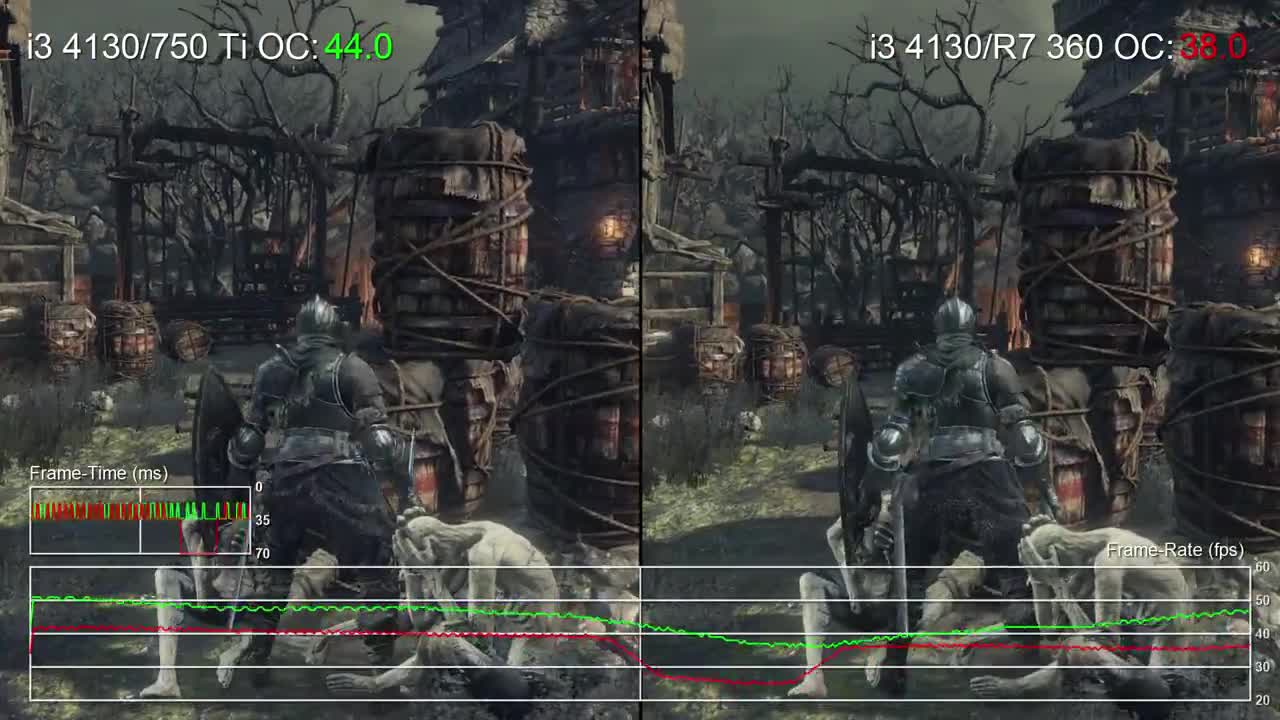 |
||
| low / 768p | 70−75 | 55−60 |
| medium / 768p | 45−50 | 35−40 |
| high / 1080p | 24−27 | 20−22 |
| ultra / 1080p | 14−16 | 10−12 |
| 4K / 2160p | 8−9 | 8−9 |
| The average gaming FPS of GeForce GTX 750 Ti in The Witcher 3: Wild Hunt is 22% more, than Radeon R7 360. | ||
| low / 768p | 90−95 | 100−110 |
| medium / 768p | 60−65 | 60−65 |
| ultra / 1080p | 40−45 | 35−40 |
| high / 768p | 55−60 | 55−60 |
The average gaming FPS of Radeon R7 360 in World of Tanks is 3% more, than GeForce GTX 750 Ti.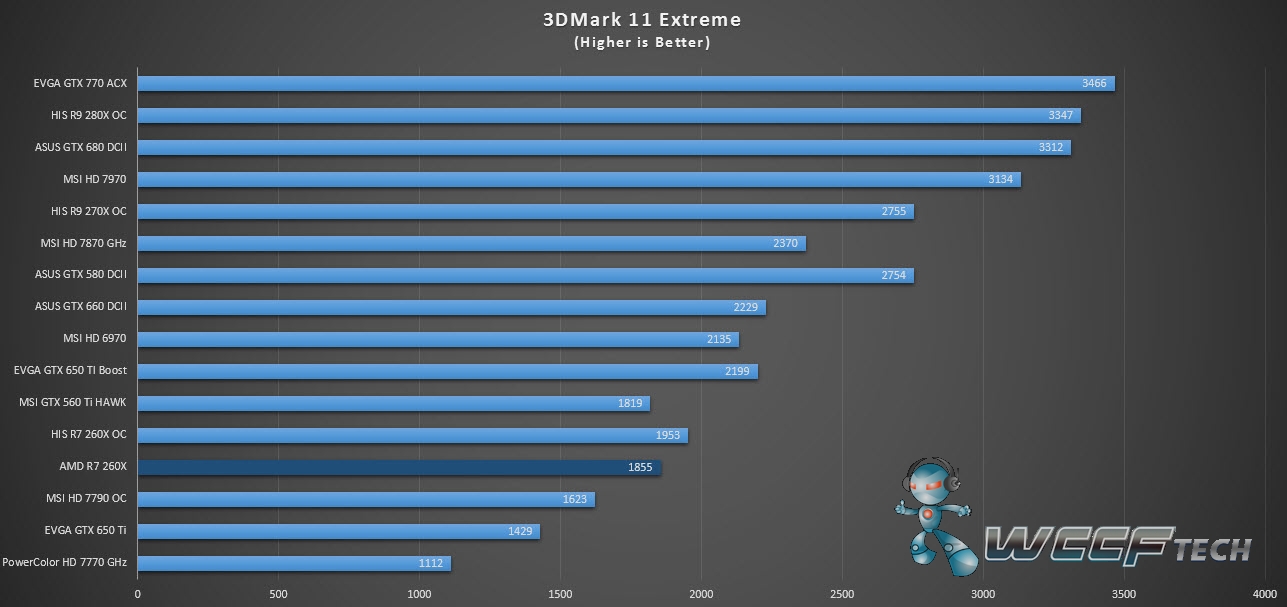 |
||
Full Specs
| GeForce GTX 750 Ti | Radeon R7 360 | |
| Architecture | Maxwell | GCN 2.0 |
| Code name | GM107 | Tobago |
| Type | Desktop | Desktop |
| Release date | 18 February 2014 | 18 June 2015 |
| Pipelines | 640 | 768 |
| Core clock speed | 1020 MHz | |
| Boost Clock | 1085 MHz | 1000 MHz |
| Transistor count | 1,870 million | 2,080 million |
| Manufacturing process technology | 28 nm | 28 nm |
| Texture fill rate | 43. 40 40 |
50.40 |
| Floating-point performance | 1,389 gflops | 1,613 gflops |
| Length | 5.7″ (14.5 cm) | 165 mm |
| Memory bus width | 128 Bit | 128 Bit |
| Memory clock speed | 5.4 GB/s | 6000 MHz |
| Memory bandwidth | 86.4 GB/s | 112 GB/s |
| Shared memory | — | |
| DirectX | 12 (11_0) | |
| Shader Model | 5.1 | 6.3 |
| OpenGL | 4.4 | 4.6 |
| OpenCL | 1.2 | 2.0 |
| Vulkan | 1.1.126 | + |
| CUDA | + | |
| Monero / XMR (CryptoNight) | 0.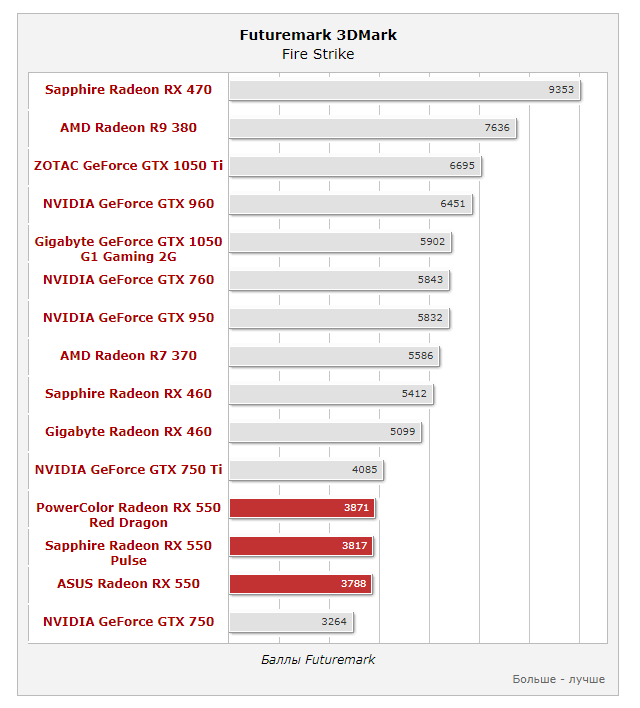 25 kh/s 25 kh/s |
0.2 kh/s |
| FreeSync | + | |
| CUDA cores | 640 | |
| Bus support | PCI Express 3.0 | PCIe 3.0 |
| Height | 4.376″ (11.1 cm) | |
| Multi monitor support | 4 displays | |
| HDMI | + | + |
| HDCP | + | |
| Maximum VGA resolution | 2048×1536 | |
| Audio input for HDMI | Internal | |
| 3D Gaming | + | |
| 3D Vision | + | |
| 3D Vision Live | + | |
| Bitcoin / BTC (SHA256) | 183 Mh/s | 225 Mh/s |
| Eyefinity | + | |
| PowerTune | + | |
| TrueAudio | + | |
| Mantle | + | |
| Design | reference | |
| Bridgeless CrossFire | + | |
| Number of Eyefinity displays | 6 | |
| DisplayPort support | + | |
| CrossFire | + | |
| VCE | + | |
| DDMA audio | + | |
| Decred / DCR (Decred) | 0. 51 Gh/s 51 Gh/s |
0.29 Gh/s |
| Ethereum / ETH (DaggerHashimoto) | 2.3 Mh/s | 10 Mh/s |
| Zcash / ZEC (Equihash) | 74.4 Sol/s | 102 Sol/s |
| Blu Ray 3D | + | |
|
Check Price |
Check Price |
Similar compares
- GeForce GTX 750 Ti vs GeForce GTX 660
- GeForce GTX 750 Ti vs Radeon HD 6970M Crossfire
- Radeon R7 360 vs GeForce GTX 660
- Radeon R7 360 vs Radeon HD 6970M Crossfire
- GeForce GTX 750 Ti vs GeForce GTX 470M SLI
- GeForce GTX 750 Ti vs Iris Plus Graphics G7 Ice Lake 64 EU
- Radeon R7 360 vs GeForce GTX 470M SLI
- Radeon R7 360 vs Iris Plus Graphics G7 Ice Lake 64 EU
AMD Radeon R7 360 vs Nvidia GeForce GTX 750 Ti
|
|
|
|
|
AMD Radeon R7 360 vs Nvidia GeForce GTX 750 Ti
Comparison of the technical characteristics between the graphics cards, with AMD Radeon R7 360 on one side and Nvidia GeForce GTX 750 Ti on the other side.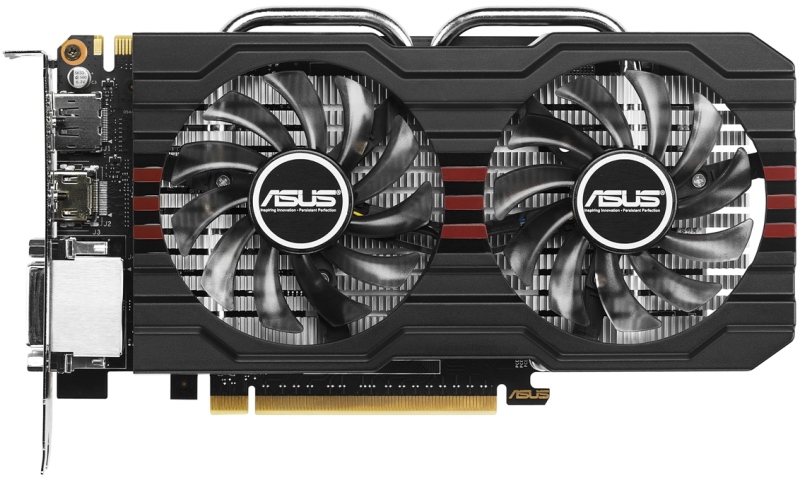 The first is dedicated to the desktop sector, it has 768 shading units, a maximum frequency of 1,1 GHz, its lithography is 28 nm. The second is used on the desktop segment, it includes 640 shading units, a maximum frequency of 1,1 GHz, its lithography is 28 nm. The following table also compares the boost clock, the number of shading units (if indicated), of execution units, the amount of cache memory, the maximum memory capacity, the memory bus width, the release date, the number of PCIe lanes, the values obtained in various benchmarks.
The first is dedicated to the desktop sector, it has 768 shading units, a maximum frequency of 1,1 GHz, its lithography is 28 nm. The second is used on the desktop segment, it includes 640 shading units, a maximum frequency of 1,1 GHz, its lithography is 28 nm. The following table also compares the boost clock, the number of shading units (if indicated), of execution units, the amount of cache memory, the maximum memory capacity, the memory bus width, the release date, the number of PCIe lanes, the values obtained in various benchmarks.
Note: Commissions may be earned from the links above.
This page contains references to products from one or more of our advertisers. We may receive compensation when you click on links to those products. For an explanation of our advertising policy, please visit this page.
Specifications:
| Graphics card | AMD Radeon R7 360 | Nvidia GeForce GTX 750 Ti | ||||||
| Market (main) | Desktop | Desktop | ||||||
| Release date | Q2 2015 | Q1 2014 | ||||||
| Model number | 215-0875010, Tobago PRO | GM107-400-A2 | ||||||
| GPU name | Tobago | GM107 | ||||||
| Architecture | GCN 1.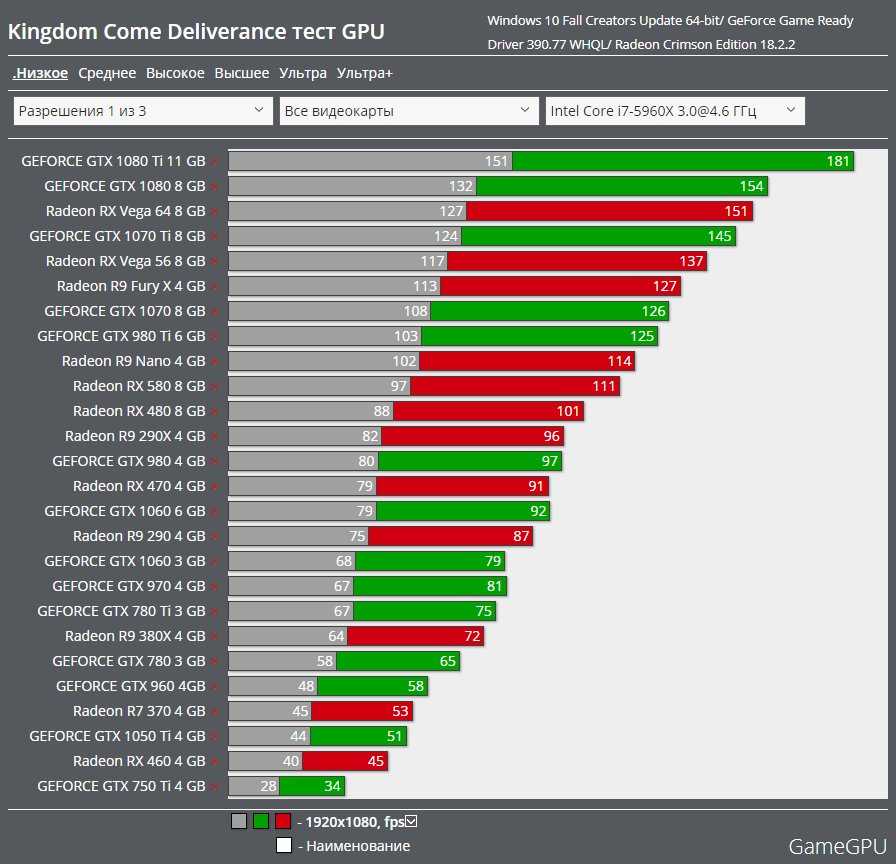 0 0 |
Maxwell | ||||||
| Generation | Pirate Islands R7 300 | GeForce 700 | ||||||
| Lithography | 28 nm | 28 nm | ||||||
| Transistors | 2.080.000.000 | 1.870.000.000 | ||||||
| Bus interface | PCIe 3.0 x16 | PCIe 3.0 x16 | ||||||
| GPU base clock | 1,00 GHz | 1,02 GHz | ||||||
| GPU boost clock | 1,05 GHz | 1,09 GHz | ||||||
| Memory frequency | 1.500 MHz | 1.350 MHz | ||||||
| Effective memory speed | 6 GB/s | 5,4 GB/s | ||||||
| Memory size | 2 GB | 2 GB | ||||||
| Memory type | GDDR5 | GDDR5 | ||||||
| Memory bus | 128 Bit | 128 Bit | ||||||
| Memory bandwidth | 96,0 GB/s | 86,4 GB/s | ||||||
| TDP | 100 W | 60 W | ||||||
| Suggested PSU | 300W ATX Power Supply | 300W ATX Power Supply | ||||||
| Multicard technology | — | — | ||||||
| Outputs |
1x DVI |
2x DVI |
||||||
| Cores (compute units, SM, SMX) | 12 | 5 | ||||||
| Shading units (cuda cores) | 768 | 640 | ||||||
| TMUs | 48 | 40 | ||||||
| ROPs | 16 | 16 | ||||||
| Cache memory | 256 KB | 2 MB | ||||||
| Pixel fillrate | 16,8 GP/s | 17,4 GP/s | ||||||
| Texture fillrate | 50,4 GT/s | 43,4 GT/s | ||||||
| Performance FP32 (float) | 1,6 TFLOPS | 1,4 TFLOPS | ||||||
| Performance FP64 (double) | 100,8 GFLOPS | 43,4 GFLOPS | ||||||
| Amazon | ||||||||
| eBay |
Note: Commissions may be earned from the links above.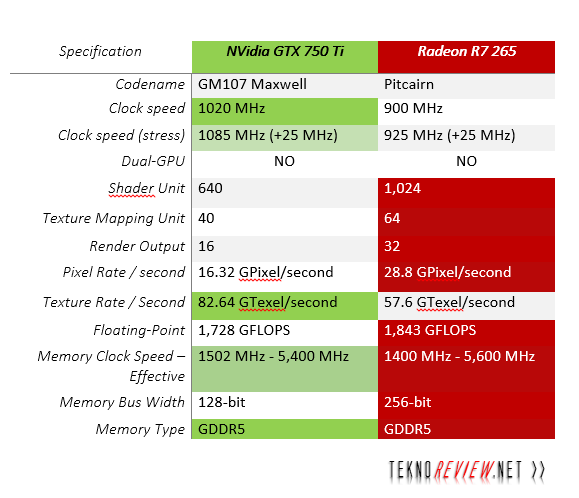
Price: For technical reasons, we cannot currently display a price less than 24 hours, or a real-time price. This is why we prefer for the moment not to show a price. You should refer to the respective online stores for the latest price, as well as availability.
We can better compare what are the technical differences between the two graphics cards.
Performances :
Performance comparison between the two processors, for this we consider the results generated on benchmark software such as Geekbench 4.
| FP32 Performance in GFLOPS | |
|---|---|
| AMD Radeon R7 360 |
1.613 |
| Nvidia GeForce GTX 750 Ti |
1.389 |
The difference is 16%.
Note: Commissions may be earned from the links above. These scores are only an
average of the performances got with these graphics cards, you may get different results.
Single precision floating point format, also known as FP32, is a computer number format that typically occupies 32 bits in PC memory. This represents a wide dynamic range of numeric values that employs a floating point.
See also:
AMD Radeon R7 360E
Equivalence:
AMD Radeon R7 360 Nvidia equivalentNvidia GeForce GTX 750 Ti AMD equivalent
Disclaimer:
When you click on links to various merchants on this site and make a purchase, this can result in this site earning a commission. Affiliate programs and affiliations include, but are not limited to, the eBay Partner Network.
As an Amazon Associate I earn from qualifying purchases.
This page includes affiliate links for which the administrator of GadgetVersus may earn a commission at no extra cost to you should you make a purchase. These links are indicated using the hashtag #ad.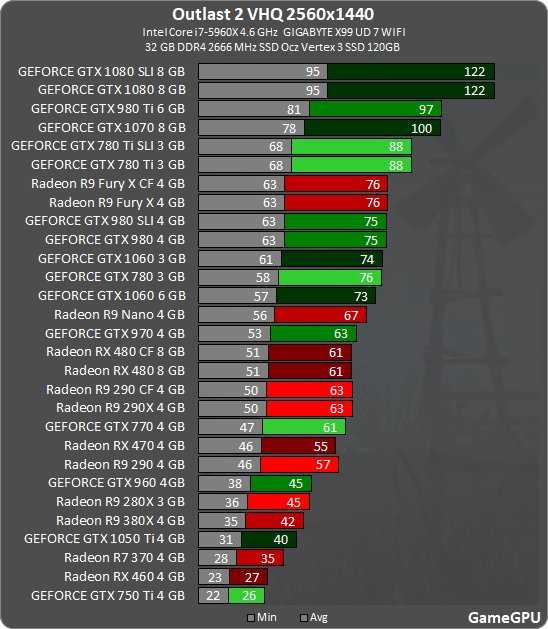
Information:
We do not assume any responsibility for the data displayed on our website. Please use at your own risk. Some or all of this data may be out of date or incomplete, please refer to the technical page on the respective manufacturer’s website to find the latest up-to-date information regarding the specifics of these products.
[Build Help] Gtx 750 ti vs Radeon r7 360 : buildapc
Build Help/Ready:
Have you read the sidebar and rules? (Please do)
Yes, I have
What is your intended use for this build? The more details the better.
I tend to play moderate games. I mainly play league of legends, but I’ve been looking to play AAA games soon, along with games on steam like tomb raider, skyrim, fallout, bioshock, and maybe battlefield. I would also like to start streaming in the future, not any of these AAA games but league of legends, but this is only after I upgrade my cpu to one of the AMD zens when they come out, as I’ve been playing league on integrated graphics on a sandy bridge pentium g620. (I know this cpu is a huge bottleneck, but I will upgrade to zen)
(I know this cpu is a huge bottleneck, but I will upgrade to zen)
If gaming, what kind of performance are you looking for? (Screen resolution, FPS, game settings)
My monitor is only at 1366 by 768. I don’t need to play games on high settings, Medium will do. (spent 2 years playing league of legends on low, I’m fine with potato graphics by this point), as long as my average fps is at least 45, then I’m happy. (Please note, I understand I’ll easily hit over 200 with this gpu on league, but I would like to experience other games too)
What is your budget (ballpark is okay)?
I would like to spend roughly 150$ Canadian, and like a max budget of $175. Note $150 is more like $108 usd, and Canadian tech costs more than usd despite the conversion. I’m looking to buy the gpu from Ncix (Canada), Canada Computers, or DirectCanada (will not actually buy from them as they look kinda sketchy, but I plan to use them to price match to NCIX and CC)
In what country are you purchasing your parts?
Canada, eh?
Post a draft of your potential build here (specific parts please). Consider formatting your parts list. Don’t ask to be spoonfed a build (read the rules!).
Consider formatting your parts list. Don’t ask to be spoonfed a build (read the rules!).
Currently, my set up goes like this
Cpu- Pentium G620 (Not bad for what it’s worth. I understand it will bottleneck pretty much any $150 gpu, but I plan to upgrade to zen later) GPU- Integrated Sandy Bridge Graphics (intel hd family) Ram- 2x4gb 1333mhz PSU- No name 450w psu, came with case (I understand this is shit, but I plan to upgrade it later, maybe even when I buy a new gpu if I choose to go with the r7 360, as it would draw more power. If I go with the gtx 750 ti, I’m sure I wouldn’t have to upgrade the psu immediately) Mobo- Asus P8H61 lga 1155 (the cheapest there was at the time)
Provide any additional details you wish below.
Replace this text with your answer.
Now for the actual question. As my budget is roughly $150 can, the only decent gpu’s I can afford are the gtx 750 ti or the Radeon r7 360. Both of these gpu’s are fairly even in performance.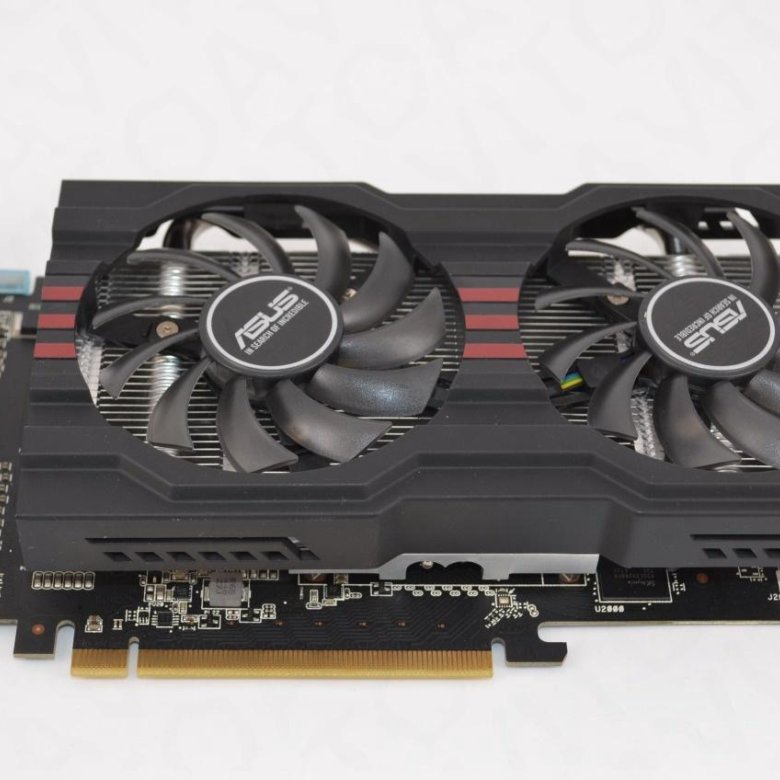 Benchmarks are in favour of the gtx 750 ti, while in games they both trade blows, with the difference in frames being around 5 fps at most.
Benchmarks are in favour of the gtx 750 ti, while in games they both trade blows, with the difference in frames being around 5 fps at most.
(https://www.youtube.com/watch?v=Pi83biaquVE)
Here lies my dilemma. The Radeon r7 360 Msi Oc edition goes for only $155, which is GREAT price wise (The gtx 750 ti costs around $180, but goes on sale to around $150-160, which I can afford. It is also currently on sale for $160, so price is only a small factor, as I can always wait for it go on sale again, it goes on sale frequently). I also expect it to have equal to or better performance than the gtx 750 ti, as this is overclocked, while the video from before was comparing stock performances. (Please Note: I DO NOT plan to overclock, myself) This seems like a steal, but I would really appreciate some other opinions, as this is my first time building/upgrading my own pc, and I’m quite inexperienced. On the other hand, the gtx 750 ti has some very compelling features. It doesn’t use much power, so I wouldn’t have to upgrade my psu now, which is nice because I would like to save for a few months before upgrading my psu, cpu and mobo. It’s performance is slightly better than the normal r7 360, and who knows if the MSI OC edition will actually provide a performance boost. It is slightly more expensive, but goes on sale often. It also apparently has more OC headroom, but I don’t plan to OC anyways so that’s sort of irrelevant. The gtx 750 ti has a GREAT reputation, and I’m sure it has it for a reason. On other forums, people say that the GTX 750 ti wins hands down, but comparisons don’t really show it. I’ve also heard that dx12 will give large performance increases to radeon gpus, over nvidia’s gpus, so wouldn’t the radeon 360 be better in the future ?(I’m not really familiar with this, any help would be appreciated) I’m stuck between these 2 cards, and I really don’t know what is better. If anyone could tell me what performs better, or is the better buy overall, I would greatly appreciate it
It’s performance is slightly better than the normal r7 360, and who knows if the MSI OC edition will actually provide a performance boost. It is slightly more expensive, but goes on sale often. It also apparently has more OC headroom, but I don’t plan to OC anyways so that’s sort of irrelevant. The gtx 750 ti has a GREAT reputation, and I’m sure it has it for a reason. On other forums, people say that the GTX 750 ti wins hands down, but comparisons don’t really show it. I’ve also heard that dx12 will give large performance increases to radeon gpus, over nvidia’s gpus, so wouldn’t the radeon 360 be better in the future ?(I’m not really familiar with this, any help would be appreciated) I’m stuck between these 2 cards, and I really don’t know what is better. If anyone could tell me what performs better, or is the better buy overall, I would greatly appreciate it
TLDR: Want a decent graphics card, torn between the gtx 750 ti (pushes the budget, but goes on sale frequently) and the radeon r7 360 MSI OC (perfectly in budget).
R7 360 pros: More cores? Release date was newer, although it is a refresh of the 260 or the 260x (performs around the 260x apparently). Should have equal or better performance to the gtx 750 ti, as in a comparison they were equal, but I’m getting the OC edition. Also, supposedly will perform better with dx12?
Cons: uses more power, will need to buy psu now (planned to upgrade later). Doesn’t have as good of a reputation, must be that way for a reason? Older architecture apparently, as it’s a refresh. Probably less value than the gtx 750 ti if the buy the gtx on sale, as it’s standard price is higher
Gtx 750 ti- Don’t need a new psu yet, slightly better performance than the radeon r7 360 in benchmarks and in games. I don’t know if the OC edition will be better than the gtx 750 ti. Great reputation.
**Cons: Might get outperformed when dx12? (please tell me if this is true) Cost(although I can wait for a sale). Older release date, although the radeon is a refresh. Might be less powerful than the 360 oc edition. **
Older release date, although the radeon is a refresh. Might be less powerful than the 360 oc edition. **
Sorry for the wall of text, but I’m really torn between these 2 cards, and any help/explanation would be GREATLY appreciated. THANK YOU
edit: Format, bolding the tldr, adding info about how I know that I will bottleneck with my cpu
0026
1625MHz vs 1350MHz
6500MHz vs 5400MHz
48 GTexels/s vs 40.8 GTexels/s
104GB/s vs 86.4GB/s
768 vs 640
2080M vs 1870M
Why is Nvidia GeForce GTX 750 Ti better than AMD Radeon R7 360?
- 40W below TDP?
60W vs 100W - 1 more DVI outputs?
2 vs 1
Which comparisons are the most popular?
AMD Radeon R7 360
vs
AMD Radeon RX 550
Nvidia GeForce GTX 750 Ti
vs
AMD Radeon RX 550
AMD Radeon R7 360
vs
Nvidia GeForce GTX 1050
Nvidia GeForce GTX 750 Ti
VS
NVIDIA GeForce GTX 10500003
AMD Radeon R7 360
vs
AMD Radeon Vega 8
Nvidia GeForce GTX 750 Ti
vs
Nvidia GeForce GT 1030 DDR4
AMD Radeon R7 360
vs
AMD Radeon R7 250
Nvidia GEFORCE GTX 750 Ti
VS
AMD Radeon Vega 8
AMD Radeon R7 360
VS
NVIDIA GEFORCE GTR4
NVIDIA GTX 750 Ti 9000 TI 9000 TS 9000 9000 9000 9000 9000 9000
003
AMD Radeon R7 360
vs
AMD Radeon RX 470
Nvidia GeForce GTX 750 Ti
vs
AMD Radeon RX 6400
AMD Radeon R7 360
vs
AMD Radeon R9 270X
Nvidia GeForce GTX 750 Ti
VS
NVIDIA GeForce GTX 960
AMD Radeon R7 360
VS
AMD Radeon R9 280
NVIDIA GTX 750 TI
9000 9000 950
NVIDIA GEFOR0228 /10
2 Reviews of Users
Functions
Refendation and quality ratio
10. 0 /10
0 /10
1 VOTES
10.0 /10 9000
2 VOTES
9000 9000 9000 9000 9000 9000 9000 9000 9000 9000 9000 9000 9000 9000 9000 9000 9000 9000 9000 9000 9000 9000 9000 9000 9
1 Votes
8.5 /10
2 Votes
performance
8.0 /10
1 Votes
7.5 /10 9000 9000 2 VOTES
003
10.0 /10
1 Votes
5.5 /10
2 VOTES
Reliability
10.0 /10
1 VOTES
10.0 /10 9000
0 2 VOTES
1.GPU clock speed
1000MHz
1020MHz
The graphics processing unit (GPU) has a higher clock speed.
2.Turbo GPU
1050MHz
1085MHz
When the GPU is running below its limits, it may jump to a higher clock speed to increase performance.
3.pixel rate
16 GPixel/s
16.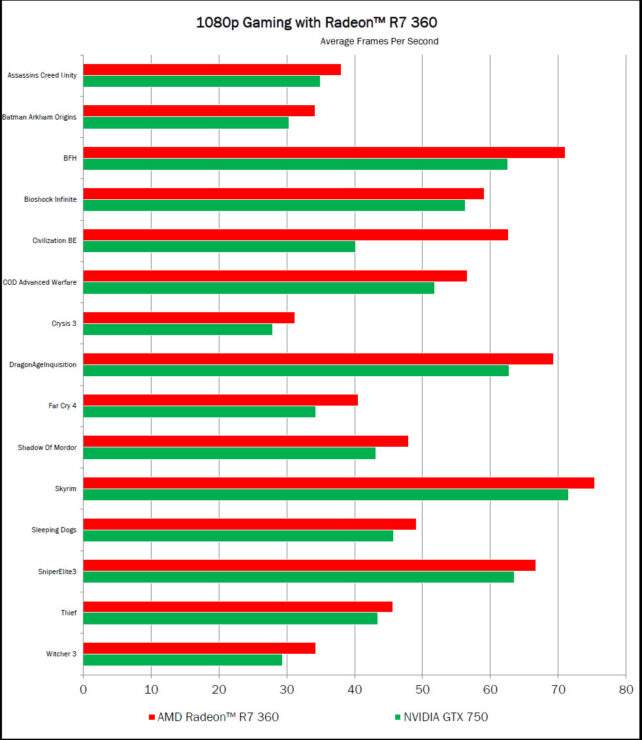 3 GPixel/s
3 GPixel/s
The number of pixels that can be displayed on the screen every second.
4.flops
1.54 TFLOPS
1.31 TFLOPS
FLOPS is a measure of GPU processing power.
5. texture size
48 GTexels/s
40.8 GTexels/s
Number of textured pixels that can be displayed on the screen every second.
6.GPU memory speed
1625MHz
1350MHz
Memory speed is one aspect that determines memory bandwidth.
7.shading patterns
Shading units (or stream processors) are small processors in a video card that are responsible for processing various aspects of an image.
8.textured units (TMUs)
TMUs accept textured units and bind them to the geometric layout of the 3D scene. More TMUs generally means texture information is processed faster.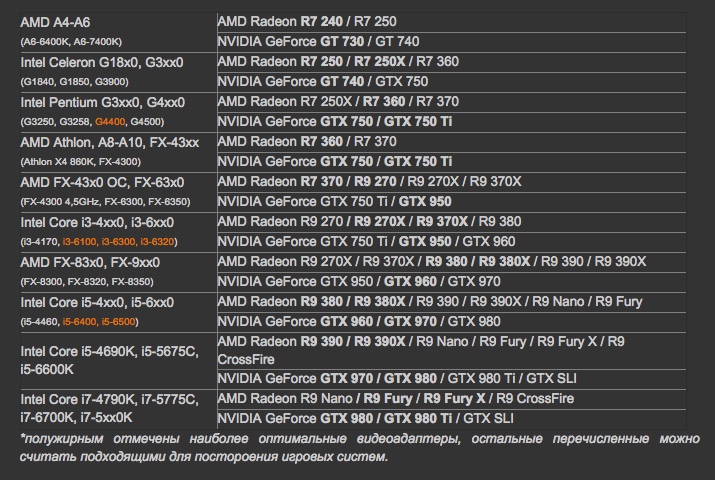
9 ROPs
ROPs are responsible for some of the final steps of the rendering process, such as writing the final pixel data to memory and for performing other tasks such as anti-aliasing to improve the appearance of graphics.
Memory
1.memory effective speed
6500MHz
5400MHz
The effective memory clock frequency is calculated from the memory size and data transfer rate. A higher clock speed can give better performance in games and other applications.
2.max memory bandwidth
104GB/s
86.4GB/s
This is the maximum rate at which data can be read from or stored in memory.
3.VRAM
VRAM (video RAM) is the dedicated memory of the graphics card. More VRAM usually allows you to run games at higher settings, especially for things like texture resolution.
4. memory bus width
memory bus width
128bit
128bit
Wider memory bus means it can carry more data per cycle. This is an important factor in memory performance, and therefore the overall performance of the graphics card.
5.versions of GDDR memory
Later versions of GDDR memory offer improvements such as higher data transfer rates, which improve performance.
6. Supports memory troubleshooting code
✖AMD Radeon R7 360
✖Nvidia GeForce GTX 750 Ti
Memory troubleshooting code can detect and fix data corruption. It is used when necessary to avoid distortion, such as in scientific computing or when starting a server.
Functions
1.DirectX version
DirectX is used in games with a new version that supports better graphics.
2nd version of OpenGL
The newer version of OpenGL, the better graphics quality in games.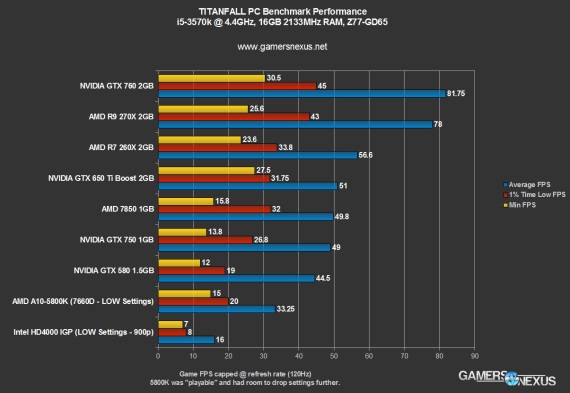
OpenCL version 3.
Some applications use OpenCL to use the power of the graphics processing unit (GPU) for non-graphical computing. Newer versions are more functional and better quality.
4. Supports multi-monitor technology
✔AMD Radeon R7 360
✔Nvidia GeForce GTX 750 Ti
The video card has the ability to connect multiple screens. This allows you to set up multiple monitors at the same time to create a more immersive gaming experience, such as a wider field of view.
5. GPU temperature at boot
Unknown. Help us offer a price. (AMD Radeon R7 360)
Lower boot temperature means the card generates less heat and the cooling system works better.
6.supports ray tracing
✖AMD Radeon R7 360
✖Nvidia GeForce GTX 750 Ti
Ray tracing is an advanced light rendering technique that provides more realistic lighting, shadows and reflections in games.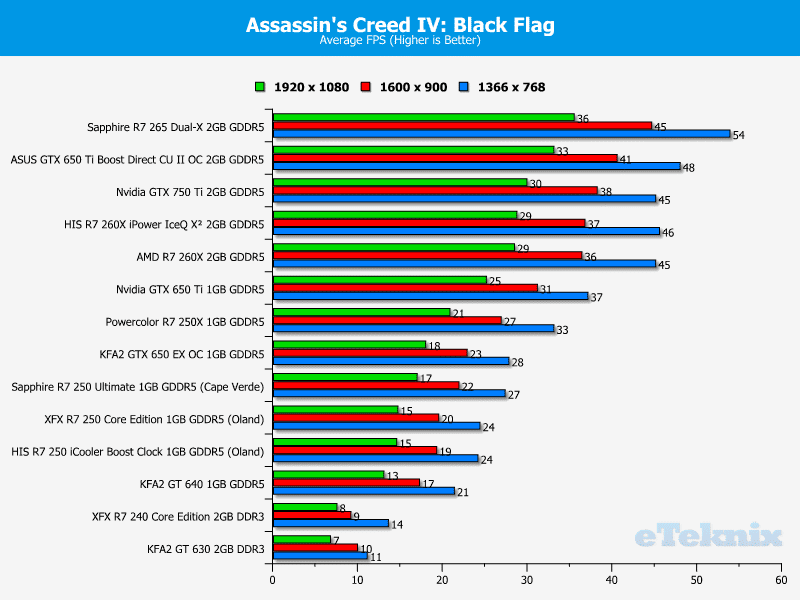
7. Supports 3D
✔AMD Radeon R7 360
✔Nvidia GeForce GTX 750 Ti
Allows you to view in 3D (if you have a 3D screen and glasses).
8.supports DLSS
✖AMD Radeon R7 360
✖Nvidia GeForce GTX 750 Ti
DLSS (Deep Learning Super Sampling) is an AI based scaling technology. This allows the graphics card to render games at lower resolutions and upscale them to higher resolutions with near-native visual quality and improved performance. DLSS is only available in some games.
9. PassMark result (G3D)
Unknown. Help us offer a price. (AMD Radeon R7 360)
This test measures the graphics performance of a graphics card. Source: Pass Mark.
Ports
1.has HDMI output
✔AMD Radeon R7 360
✔Nvidia GeForce GTX 750 Ti
Devices with HDMI or mini HDMI ports can stream HD video and audio to the connected display.
2.HDMI connectors
More HDMI connectors allow you to connect multiple devices at the same time, such as game consoles and TVs.
HDMI version 3
Unknown. Help us offer a price. (AMD Radeon R7 360)
Unknown. Help us offer a price. (Nvidia GeForce GTX 750 Ti)
Newer versions of HDMI support higher bandwidth for higher resolutions and frame rates.
4. DisplayPort outputs
Allows connection to a display using DisplayPort.
5.DVI outputs
Allows connection to a display using DVI.
6.mini DisplayPort outputs
Allows connection to a display using mini DisplayPort.
Price Match
Cancel
Which graphics cards are better?
AMD Radeon R7 360 vs NVIDIA GeForce GTX 750 Ti comparison which is better?
| General information | |
|
Price-quality ratio The sum of all the advantages of the device divided by its price. |
|
| 57.9%
3.9% (7.2%) better than |
54% |
|
Architecture |
|
| GCN 2.0 | Maxwell |
|
Codename |
|
| Tobago | GM107 |
|
Type |
|
| Desktop | Desktop |
|
Release price |
|
| $109
-40 $ (-26.8%) better than |
149 $ |
|
Number of shaders |
|
| 768
128 (20%) better than |
640 |
|
Core clock |
|
| n/a | 1020 MHz |
|
Boost frequency |
|
| 1000 MHz | 1085 MHz
At 85 MHz (8.5%) better than |
|
Number of transistors |
|
2.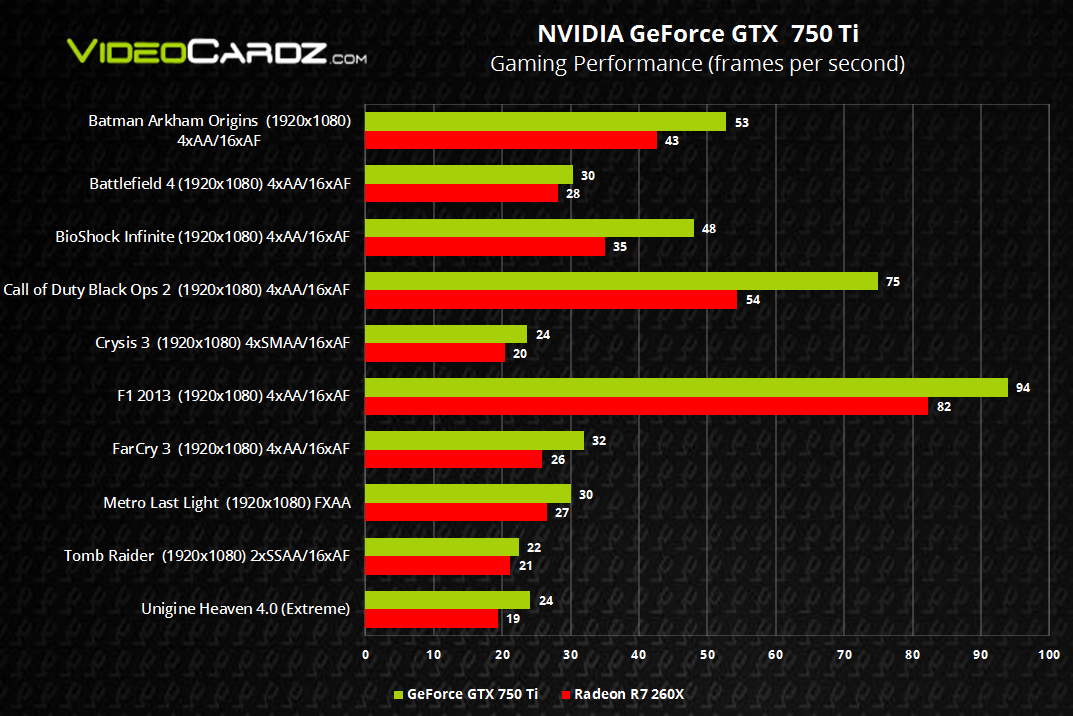 080 million 080 million |
1.870 million |
|
Process |
|
| 28 nm | 28 nm |
|
Interface |
|
| PCIe 3.0 x16 | PCIe 3.0 x16 |
|
Power Demand (TDP) Calculated thermal power shows the average heat dissipation in load operation, |
|
| 100W | 60 W
-40 W (-40%) better than |
|
Length |
|
| 165 mm | 14.5 cm |
|
Additional power connectors |
|
| 1 x 6-pin | no |
|
G-SYNC support NVIDIA G-SYNC technology delivers a smooth gaming experience with variable refresh rates and the elimination of visual artifacts. |
|
|
3D Vision |
|
| n/a | + |
|
GPU Boost |
|
| n/a | + |
|
GeForce Experience |
|
| n/a | + |
|
Vulkan NVIDIA’s Vulkan technology allows developers to gain low-level access to the GPU to optimize graphics commands (better than OpenGL and Direct3D APIs). |
|
| + | n/a |
|
CUDA The CUDA architecture enables applications that are optimized for |
|
|
Multi-monitor support |
|
| n/a | 4 |
|
Decred / DCR (Decred) |
|
| 0.29 Gh/s | 0.51 Gh/s |
|
Zcash / ZEC (Equihash) |
|
| 1 Sol/s | 1 Sol/s |
|
Bus |
|
| PCIe 3.0 | PCI Express 3.0 |
|
Number of CUDA cores A large number of CUDA cores increase performance in graphics computing, |
|
| n/a | 640 |
|
Height |
|
| n/a | 11.1 cm |
|
HDCP |
|
| n/a | + |
|
Maximum resolution via VGA |
|
| n/a | 2048×1536 |
|
Audio input for HDMI |
|
| n/a | internal |
|
Design |
|
| reference | n/a |
|
CrossFire without bridge |
|
| + | n/a |
|
Eyefinity |
|
| + | n/a |
|
Number of Eyefinity monitors |
|
| 6 | n/a |
|
HDMI |
|
|
DisplayPort Ready |
|
|
FreeSync |
|
| + | n/a |
|
PowerTune |
|
| + | n/a |
|
TrueAudio |
|
| + | n/a |
|
VCE |
|
| + | n/a |
|
Audio DDMA |
|
| + | n/a |
|
OpenCL |
|
2. 0 0 |
n/a |
|
Mantle |
|
| + | n/a |
|
Blu Ray 3D |
|
| n/a | + |
|
3D Gaming |
|
| n/a | + |
|
3D Vision Live |
|
| n/a | + |
|
FXAA |
|
|
TXAA |
|
|
Adaptive VSync |
|
| n/a | + |
|
Video connectors |
|
| 1x DVI, 1x HDMI, 1x DisplayPort | 1x Dual Link DVI-I, 1x Dual Link DVI-D, 1x mini-HDMI |
|
DirectX |
|
| DirectX® 12 | 12 (11_0) |
|
Floating point performance |
|
1. 613 gflops 613 gflops |
1.389 gflops |
|
Ethereum / ETH (DaggerHashimoto) |
|
| 10 Mh/s | 2.3 Mh/s |
|
CrossFire |
|
| + | n/a |
| Memory | |
|
Memory type |
|
| GDDR5 | GDDR5 |
|
Maximum memory Large video memory allows you to run demanding games with lots of textures, |
|
| 2GB | 2 GB |
|
Memory bus width The wider the video memory bus, the more data is transferred to the GPU per unit of time and the better performance in demanding games. |
|
| 128 bit | 128 bit |
|
Shared memory |
|
| n/a | — |
|
Memory frequency A high memory frequency has a positive effect on the speed of a video card with a large amount of data. |
|
| 6000 MHz
On 5994.6 MHz (111011.1%) is better than |
5.4 MHz |
|
Memory bandwidth The higher the data transfer bandwidth, the more effective amount of RAM the PC can use. |
|
| 112
25.6 (29.6%) better than |
86.4 |
Comparison of Radeon R7 360 and GeForce GTX 750 Ti. Which video card to choose?
|
Radeon R7 360 |
GeForce GTX 750 Ti |
|
June, 2015 | 1.1GHz | 2GB GDDR5 |
February, 2014 | 1GHz | 2GB GDDR5 |
|
Edelmark rating |
Edelmark rating |
General comparison
Game performance
Video card tested on: Battlefield 3, Battlefield 4, Bioshock Infinite, Crysis 2, Crysis 3, Dirt3, FarCry 3, Hitman: Absolution, Metro: Last Light, Thief, Alien: Isolation , Anno 2070, Counter-Strike: Global Offensive, Diablo III, Dirt Rally, Dragon Age: Inquisition, The Elder Scrolls V: Skyrim, FIFA 15, FIFA 16, GRID Autosport, Grand Theft Auto V, Sleeping Dogs, Tomb Raider, The Witcher 3: Wild Hunt.
| Radeon R7 360 | 5.9 out of 10 |
|---|---|
| GeForce GTX 750 Ti | 5.9 out of 10 |
| GeForce GTX 950 | 6.3 out of 10 |
Graphics
Tested with: T-Rex, Manhattan, Cloud Gate Factor, Sky Diver Factor, Fire Strike Factor.
| Radeon R7 360 | 5.9 out of 10 |
|---|---|
| GeForce GTX 750 Ti | 7.1 out of 10 |
| GeForce GTX 950 | 6.1 out of 10 |
Computing power
Tests used: Face Detection, Ocean Surface Simulation, Particle Simulation, Video Composition, Bitcoin Mining.
| Radeon R7 360 | 6.3 out of 10 |
|---|---|
| GeForce GTX 750 Ti | 6.0 out of 10 |
| GeForce GTX 950 | 6.8 out of 10 |
Output per W
Tested on: Battlefield 3, Battlefield 4, Bioshock Infinite, Crysis 2, Crysis 3, Dirt3, FarCry 3, Hitman: Absolution, Metro: Last Light, Thief, Alien: Isolation, Anno 2070, Counter-Strike: Global Offensive, Diablo III, Dirt Rally, Dragon Age: Inquisition, The Elder Scrolls V: Skyrim, FIFA 15, FIFA 16, GRID Autosport, Grand Theft Auto V, Sleeping Dogs, Tomb Raider, The Witcher 3: Wild Hunt, T-Rex, Manhattan , Cloud Gate Factor, Sky Diver Factor, Fire Strike Factor, Face Detection, Ocean Surface Simulation, Particle Simulation, Video Composition, Bitcoin Mining, TDP.
| Radeon R7 360 | 7.3 out of 10 |
|---|---|
| GeForce GTX 750 Ti | 8.0 out of 10 |
| GeForce GTX 950 | 7.8 out of 10 |
Price-Performance
Tested on: Battlefield 3, Battlefield 4, Bioshock Infinite, Crysis 2, Crysis 3, Dirt3, FarCry 3, Hitman: Absolution, Metro: Last Light, Thief, Alien: Isolation, Anno 2070, Counter-Strike: Global Offensive, Diablo III, Dirt Rally, Dragon Age: Inquisition, The Elder Scrolls V: Skyrim, FIFA 15, FIFA 16, GRID Autosport, Grand Theft Auto V, Sleeping Dogs, Tomb Raider, The Witcher 3: Wild Hunt, T-Rex, Manhattan, Cloud Gate Factor, Sky Diver Factor, Fire Strike Factor, Face Detection, Ocean Surface Simulation, Particle Simulation, Video Composition, Bitcoin Mining, Best new price.
| Radeon R7 360 | n/a |
|---|---|
| GeForce GTX 750 Ti | n/a |
| GeForce GTX 950 | n/a |
Noise and Power
Tested on: TDP, Idle Power Consumption, Load Power Consumption, Idle Noise Level, Load Noise Level.
| Radeon R7 360 | 9.3 out of 10 |
|---|---|
| GeForce GTX 750 Ti | 9.6 out of 10 |
| GeForce GTX 950 | 9.4 out of 10 |
Overall graphics card rating
| Radeon R7 360 | 6.5 out of 10 |
|---|---|
| GeForce GTX 750 Ti | 6.9 out of 10 |
| GeForce GTX 950 | 6.9 out of 10 |
Benefits
Why is the Radeon R7 360 better?
| Higher effective memory clock speed | 6.000 MHz | vs | 5.400 MHz | More than 10% higher effective memory clock speed |
|---|---|---|---|---|
| Higher memory clock speed | 1.500 MHz | vs | 1.350 MHz | More than 10% higher memory clock speed |
Why is the GeForce GTX 750 Ti better?
| Better test Fire Strike | 33.8 | vs | 28. |
Approximately 20% better than Fire Strike 9 test0522 |
|---|---|---|---|---|
| Lower power consumption | 60W | vs | 100W | 40% lower power consumption |
Comparative benchmarks (benchmarks)
Bitcoin mining
| Radeon R7 360 | 189.76 mHash/s |
|---|---|
| GeForce GTX 750 Ti | 173.22 mHash/s |
Face Recognition
| Radeon R7 360 | 37.98 mPixels/s |
|---|---|
| GeForce GTX 750 Ti | 44.94 mPixels/s |
Fire Strike test
| Radeon R7 360 | 28.33 |
|---|---|
| GeForce GTX 750 Ti | 33.8 |
Sky Diver Test
| Radeon R7 360 | 241.89 |
|---|---|
| GeForce GTX 750 Ti | 255.03 |
Cloud Gate test
| Radeon R7 360
1020MHz max 2457 Average: 938 MHz 1050MHz max 2457 Average: 938 MHz GPU memory frequency This is an important aspect calculating memory bandwidth 1350MHz max 16000
Average: 1326. 1500MHz max 16000 Average: 1326.6 MHz FLOPS A measure of the processing power of a processor is called FLOPS. 1.4TFLOPS max 1142.32 Average: 92.5 TFLOPS 1.47TFLOPS max 1142.32 Average: 92.5 TFLOPS Turbo GPU If the GPU speed drops below its limit, it can switch to a high clock speed to improve performance. 1085MHz max 2903 Average: 1375.8 MHz MHz max 2903
Average: 1375. Texture size A certain number of textured pixels are displayed on the screen every second. 40.8 GTexels/s max 756.8 Average: 145.4 GTexels/s 48 GTexels/s 86.4GB/s max 2656 Average: 198.3 GB/s 96GB/s max 2656 Average: 198.3 GB/s Effective memory speed The effective memory clock speed is calculated from the size and information transfer rate of the memory. The performance of the device in applications depends on the clock frequency. The higher it is, the better. 5400MHz max 19500
Average: 6984. 6000MHz max 19500 Average: 6984.5 MHz RAM 2GB max 128 Average: 4.6 GB 2GB max 128 Average: 4.6 GB GDDR Memory Versions Latest GDDR memory versions provide high data transfer rates to improve overall performance 5 Average: 4.5 5 Average: 4.5 Memory bus width A wide memory bus means that it can transfer more information in one cycle. 128bit max 8192 Average: 290.1bit 128bit max 8192 Average: 290.1bit Release date 2014-02-18 00:00:00 n/a Heat dissipation (TDP) The lower the TDP, the less power will be consumed. 60W Average: 140.4W 150W Average: 140.4W Process technology The small size of the semiconductor means it is a new generation chip. 28 nm Average: 47.5 nm 28 nm Average: 47.5 nm Number of transistors The higher their number, the more processor power it indicates 1870 million max 80000 Average: 5043 million 2080 million max 80000 Average: 5043 million PCIe version Considerable speed is provided by the expansion card used to connect the computer to peripherals. The updated versions have impressive throughput and provide high performance. 3
Mean: 2. 3 Mean: 2.8 Width 145mm max 421.7 Average: 242.6mm 211.12mm max 421.7 Average: 242.6mm Height 111mm max 180 Average: 119.1mm 111.15mm max 180 Average: 119.1mm Purpose Desktop n.a. max 12.2 Average: 11.1 12 max 12.2
Average: 11. OpenCL version Used by some applications to enable GPU power for non-graphical calculations. The newer the version, the more functional it will be 3 max 4.6 Average: 1.7 2.1 max 4.6 Average: 1.7 opengl version Later versions provide better game graphics 4.6 max 4.6 Average: 4 4.5 max 4.6 Average: 4 Shader model version 5.1 max 6.6
Average: 5. 6.3 max 6.6 Average: 5.5 version VULKAN 1.3 is version CUDA 5 No data HDMI Output HDMI Availability HDMI allows you to connect devices with ports of HDMI or Mini-HDMI. They can transmit video and audio to the display. Yes Yes DVI outputs Allows connection to a display using DVI 2 Mean: 1.4 one Mean: 1.4 HDMI Yes Yes Passmark score 3852 max 29325
Average: 7628. 3016 max 29325 Average: 7628.6 3DMark Cloud Gate GPU test score 30722 max 1
Average: 80042.3 max 1
Average: 80042.3 3DMark Fire Strike Score 3942 max 38276 Average: 12463 max 38276 Average: 12463 3DMark Fire Strike Graphics test score 4208 max 49575 Average: 11859.1 4028 max 49575
Average: 11859. 3DMark 11 Performance GPU score 5270 max 57937 Average: 18799.9 max 57937 Average: 18799.9 3DMark Vantage Performance score 21176 max 97887 Average: 37830.6 max 97887 Average: 37830.6 Unigine Heaven 3.0 score 53 max 60072 Average: 2402 max 60072 Average: 2402 Unigine Heaven 4.0 test score 530 max 4818
Average: 1291. max 4818 Average: 1291.1 Octane Render test score OctaneBench 34 max 125 Average: 47.1 max 125 Average: 47.1 Compare AMD Radeon R7 M460 and NVIDIA GeForce GTX 750 Ti
Comparative analysis of AMD Radeon R7 M460 and NVIDIA GeForce GTX 750 Ti video cards by all known characteristics in the categories: General information, Specifications, Video outputs and ports, Compatibility, dimensions, requirements, API support, Memory, Technology support. AMD Radeon R7 M460 versus NVIDIA GeForce GTX 750 Ti BenefitsReasons to choose AMD Radeon R7 M460
Reasons to choose NVIDIA GeForce GTX 750 Ti
2.1 times greater in GFXBench 4.0 — Car Chase Offscreen (Fps) benchmark: 4843 vs 2294
Benchmark comparison
GPU 1: AMD Radeon R7 M460
Performance comparison
Compare AMD Radeon R7 340 OEM and NVIDIA GeForce GTX 750 Ti
Comparative analysis of AMD Radeon R7 340 OEM and NVIDIA GeForce GTX 750 Ti video cards by all known characteristics in the categories: General information, Specifications, Video outputs and ports, Compatibility, dimensions, requirements, API support, Memory, Technology support. AMD Radeon R7 340 OEM versus NVIDIA GeForce GTX 750 Ti BenefitsReasons to choose AMD Radeon R7 340 OEM
% less power consumption : 50 Watt vs 60 Watt
Reasons to choose NVIDIA GeForce GTX 750 Ti
3 | 1020 MHz vs 730 MHz | |||||||||||||||||||||||||||||||||||||||||||||||||||||||||||||||||||||||||||||||||||||||||||||||||||||||||||||||||||||||||||||||||||||||||||||||||||||||||||||||||||||||||||||||||||||||||||||||||||||||||||||||||||||||||||||||||||||||||||||||||||||||||||||||||||||||||||||||||||||||||||||||||||||||||||||||||||||||||||||||||||
|---|---|---|---|---|---|---|---|---|---|---|---|---|---|---|---|---|---|---|---|---|---|---|---|---|---|---|---|---|---|---|---|---|---|---|---|---|---|---|---|---|---|---|---|---|---|---|---|---|---|---|---|---|---|---|---|---|---|---|---|---|---|---|---|---|---|---|---|---|---|---|---|---|---|---|---|---|---|---|---|---|---|---|---|---|---|---|---|---|---|---|---|---|---|---|---|---|---|---|---|---|---|---|---|---|---|---|---|---|---|---|---|---|---|---|---|---|---|---|---|---|---|---|---|---|---|---|---|---|---|---|---|---|---|---|---|---|---|---|---|---|---|---|---|---|---|---|---|---|---|---|---|---|---|---|---|---|---|---|---|---|---|---|---|---|---|---|---|---|---|---|---|---|---|---|---|---|---|---|---|---|---|---|---|---|---|---|---|---|---|---|---|---|---|---|---|---|---|---|---|---|---|---|---|---|---|---|---|---|---|---|---|---|---|---|---|---|---|---|---|---|---|---|---|---|---|---|---|---|---|---|---|---|---|---|---|---|---|---|---|---|---|---|---|---|---|---|---|---|---|---|---|---|---|---|---|---|---|---|---|---|---|---|---|---|---|---|---|---|---|---|---|---|---|---|---|---|---|---|---|---|---|---|---|---|---|---|---|---|---|---|---|---|---|---|---|---|---|---|---|---|---|---|---|---|---|---|---|---|---|---|---|---|---|---|---|---|---|---|---|---|---|---|---|---|
| Boost core clock | 1085 MHz vs 780 MHz | |||||||||||||||||||||||||||||||||||||||||||||||||||||||||||||||||||||||||||||||||||||||||||||||||||||||||||||||||||||||||||||||||||||||||||||||||||||||||||||||||||||||||||||||||||||||||||||||||||||||||||||||||||||||||||||||||||||||||||||||||||||||||||||||||||||||||||||||||||||||||||||||||||||||||||||||||||||||||||||||||||
| Texturing speed | 43.4 GTexel/s vs 18.72 GTexel/s | |||||||||||||||||||||||||||||||||||||||||||||||||||||||||||||||||||||||||||||||||||||||||||||||||||||||||||||||||||||||||||||||||||||||||||||||||||||||||||||||||||||||||||||||||||||||||||||||||||||||||||||||||||||||||||||||||||||||||||||||||||||||||||||||||||||||||||||||||||||||||||||||||||||||||||||||||||||||||||||||||||
| Number of shaders | 640 vs 384 | |||||||||||||||||||||||||||||||||||||||||||||||||||||||||||||||||||||||||||||||||||||||||||||||||||||||||||||||||||||||||||||||||||||||||||||||||||||||||||||||||||||||||||||||||||||||||||||||||||||||||||||||||||||||||||||||||||||||||||||||||||||||||||||||||||||||||||||||||||||||||||||||||||||||||||||||||||||||||||||||||||
| Floating point performance | 1.389 gflops vs 599.0 gflops | |||||||||||||||||||||||||||||||||||||||||||||||||||||||||||||||||||||||||||||||||||||||||||||||||||||||||||||||||||||||||||||||||||||||||||||||||||||||||||||||||||||||||||||||||||||||||||||||||||||||||||||||||||||||||||||||||||||||||||||||||||||||||||||||||||||||||||||||||||||||||||||||||||||||||||||||||||||||||||||||||||
| PassMark — G2D Mark | 501 vs 412 | |||||||||||||||||||||||||||||||||||||||||||||||||||||||||||||||||||||||||||||||||||||||||||||||||||||||||||||||||||||||||||||||||||||||||||||||||||||||||||||||||||||||||||||||||||||||||||||||||||||||||||||||||||||||||||||||||||||||||||||||||||||||||||||||||||||||||||||||||||||||||||||||||||||||||||||||||||||||||||||||||||
| PassMark — G3D Mark | 3911 vs 1046 |
Benchmark comparison
GPU 1: AMD Radeon R7 340 OEM
GPU 2: NVIDIA GeForce GTX 750 Ti
| PassMark — G2D Mark |
|
|||
| PassMark — G3D Mark |
|
|||
| Geekbench — OpenCL |
|
| Name | AMD Radeon R7 340 OEM | NVIDIA GeForce GTX 750 Ti |
|---|---|---|
| PassMark — G2D Mark | 412 | 501 |
| PassMark — G3D Mark | 1046 | 3911 |
| Geekbench — OpenCL | 24076 | 12753 |
| CompuBench 1. |
42.463 | |
| CompuBench 1.5 Desktop — Ocean Surface Simulation (Frames/s) | 642.715 | |
| CompuBench 1.5 Desktop — T-Rex (Frames/s) | 2.933 | |
| CompuBench 1.5 Desktop — Video Composition (Frames/s) | 26.532 | |
| CompuBench 1.5 Desktop — Bitcoin Mining (mHash/s) | 133.458 | |
| GFXBench 4.0 — Car Chase Offscreen (Frames) | 4843 | |
| GFXBench 4. |
3683 | |
| GFXBench 4.0 — T-Rex (Frames) | 3329 | |
| GFXBench 4.0 — Car Chase Offscreen (Fps) | 4843 | |
| GFXBench 4.0 — Manhattan (Fps) | 3683 | |
| GFXBench 4.0 — T-Rex (Fps) | 3329 | |
| 3DMark Fire Strike — Graphics Score | 1278 |
Feature comparison
| AMD Radeon R7 340 OEM | NVIDIA GeForce GTX 750 Ti | |
|---|---|---|
| Architecture | GCN 1. |
Maxwell |
| Codename | Oland | GM107 |
| Production date | May 5, 2015 | February 18, 2014 |
| Ranking | 307 | 593 |
| Type | Desktop | Desktop |
| Price at first issue date | $149 | |
| Price now | $299.01 | |
| Price/performance ratio (0-100) | 15. |
|
| Boost core clock | 780MHz | 1085 MHz |
| Core frequency | 730MHz | 1020 MHz |
| Floating point performance | 599.0 gflops | 1.389 gflops |
| Process | 28nm | 28 nm |
| Number of shaders | 384 | 640 |
| Texturing Speed | 18.72 GTexel/s | 43.4 GTexel/s |
| Power consumption (TDP) | 50 Watt | 60 Watt |
| Number of transistors | 1,040 million | 1,870 million |
| Number of CUDA conveyors | 640 | |
| Video connectors | 1x DVI, 1x HDMI, 1x VGA | 2x DVI, 1x mini-HDMI, One Dual Link DVI-I, One Dual Link DVI-D, One mini. |
| Audio input for HDMI | Internal | |
| G-SYNC support | ||
| HDCP | ||
| HDMI | ||
| Maximum resolution VGA | 2048×1536 | |
| Multi-monitor support | ||
| Interface | PCIe 3.0 x8 | PCIe 3.0 x16 |
| Additional power connectors | None | None |
| Tire | PCI Express 3. |
|
| Height | 4.376″ (11.1 cm) | |
| Length | 5.7″ (14.5cm) | |
| DirectX | 12.0 (11_1) | 12.0 (11_0) |
| OpenGL | 4.5 | 4.4 |
| Maximum memory size | 2GB | 2GB |
| Memory bandwidth | 28.8 GB/s | 86.4 GB/s |
| Memory bus width | 128 Bit | 128 Bit |
| Memory frequency | 1800 MHz | 5. |

 The more%, the better the quality per unit price in comparison with all analogues.
The more%, the better the quality per unit price in comparison with all analogues. 

